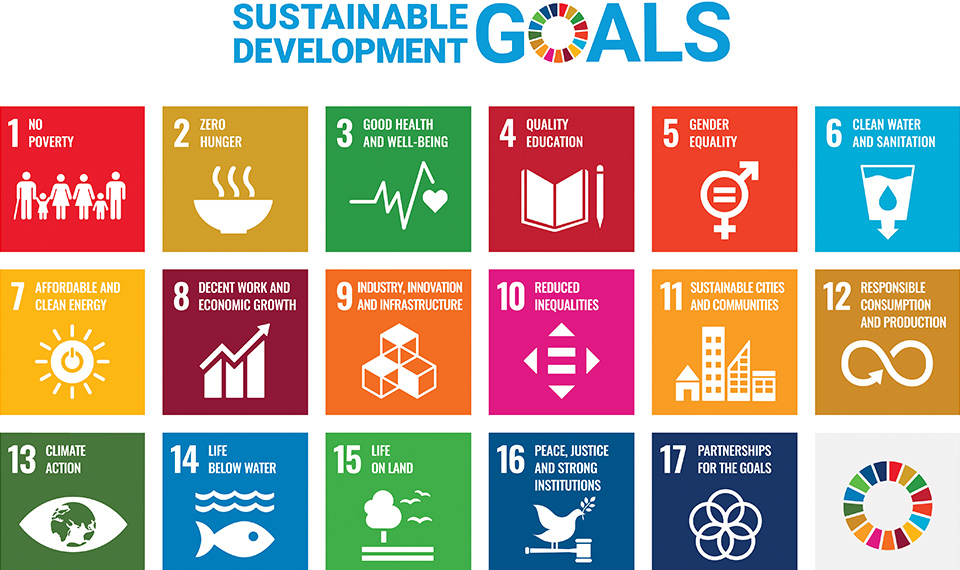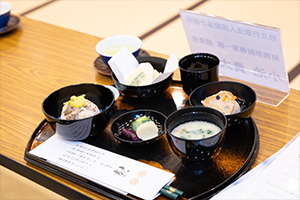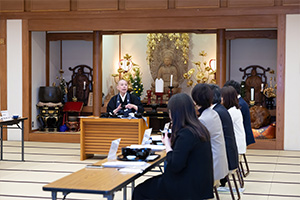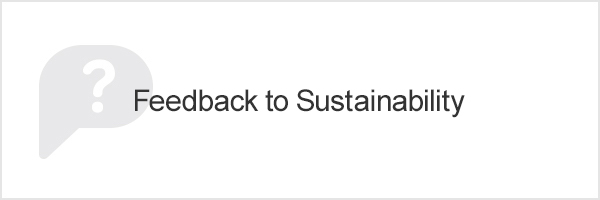Realizing a Sustainable Society through Investment in JICA Bonds

The Soto Sect, the largest mono-religious sect in Japan with approximately 14,000 temples, and the Japan International Cooperation Agency (JICA), the only ODA implementing agency in Japan, which issued Japan's first social bonds in 2016, jointly discussed the themes of food, disaster prevention and reconstruction, and peace.

Participants
| Soto Sect Office | Japan International Cooperation Agency (JICA) |
Nomura Securities Co., Ltd. |
|---|---|---|
|
|
|
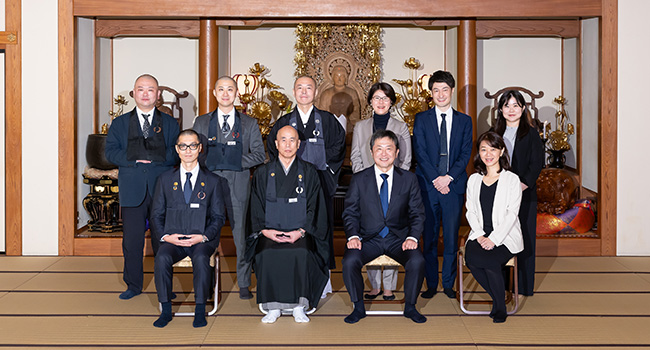
About the Soto Sect
Ishihara:
Today, in the form of an engagement meeting, we will have a discussion between the Japan International Cooperation Agency (JICA), the issuer, and Soto Sect, the investor, on the themes of food, disaster prevention and reconstruction, and peace. For starters, could you please give us an overview of the Soto Sect and its initiatives and views on the SDGs?
Soto Sect Overview
Soto Sect, Mr. Kondo:
About 800 years ago, Dogen Zenji brought Zen teachings from China to Japan, and Keizan Zenji and his disciples spread the Soto Sect throughout Japan. With Eiheiji Temple in Fukui and Sojiji Temple in Yokohama as the two main temples, there are about 14,000 temples and about 15,000 monks in Japan.
The teachings of the Soto sect
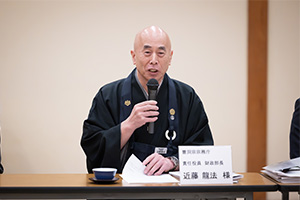
Soto Sect Office Mr. Kondo
Soto Sect, Mr. Kondo:
Dogen Zenji, the founder of Eiheiji, placed great importance on zazen, the form of Buddha's enlightenment, and studied it throughout his life. For this reason, the core of the teachings of the Soto Sect is called "shikantaza," which is the practice of zazen, in which you practice zazen with all your heart and soul.
However, zazen is not the only form of Zen training. During training, monks of the Soto Sect are taught that "everything in daily life is training." Zazen and sutra chanting are not the only forms of training, but it is important to practice zazen with gratitude and sincerity in all your daily activities, such as cleaning, eating, cooking, and doing office work.
Initiatives of the Soto Sect
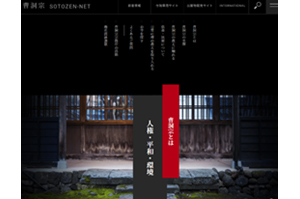
Soto Sect, Mr. Kondo:
Since 1992, we have been engaged in a variety of activities under the slogan "Establishment of human rights, maintenance of peace and protection of the environment" to convey the teachings of Zen in an easy-to-understand manner.
Zen training is not limited to zazen and sutra chanting. Solving various social issues as a member of the Soto Sect is an important part of Zen training to cultivate oneself as a Soto monk. With the spread of the concept of SDGs in recent years, I feel that we are able to approach a wider range of issues around the world, albeit indirectly, in order to realize the philosophy of the Soto Sect by connecting with corporations that are active globally, such as JICA.
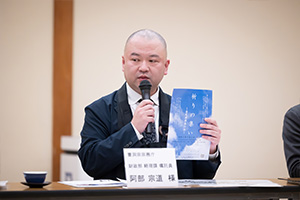
Soto Sect Office Mr. Abe
Soto Sect, Mr. Abe:
Dogen Zenji believes that all activities of daily life, such as waking up, eating, cleaning, washing and bathing, have the same value as zazen and should be performed as a form of Zen training. This is one of the fundamental principles of Zen practice.
There is another important teaching. Dogen Zenji says that we were born into the world with the same mind as Buddha, the "Buddhist mind". The "Buddhist mind" embodies compassion for others, valuing not only our own life but also the lives of other people and things. However, if we do not realize the preciousness of this, we lead a selfish life and cause suffering and worry.
It can be said that the way of life of the Soto Sect is to consciously engage in daily life and find the joy of living with each other. This is the other pillar of the practice of Bosatsu-gyo. When people think of bodhisattvas, they think of Buddhist statues such as Kannon Bosatsu and Jizo Bosatsu, and many people think of them as objects to be worshiped. Bodhisattvas are beings who help us, and at the same time, I "Aim and become" myself.
Recent Initiatives
Prayer Gathering - Meeting for the Commemoration of the Dead -
- Meeting held twice a year for those who have lost family members or friends to suicide.
- The bereaved families of those who have died often feel helpless anger and remorse at the sudden event, and some of them cannot even hold funerals due to social prejudice. Based on these circumstances, this initiative was launched in 2009 with the intention of holding a memorial service, which is an important duty of a monk.
Support Activities in Disaster-Stricken Areas
- Various initiatives in areas affected by the Great East Japan Earthquake (Picture book reading and picture-story showing in Yamada-machi, Iwate Prefecture, bead bracelet making in Fukushima City, and scented bag making in Natori City, Miyagi Prefecture)
- Creating opportunities to share time with people suffering from distress.
Disability equality training
- Many barriers exist in society for people with disabilities. In order to remove these barriers, it is essential for each and every one of us to indicate an understanding of disabilities and to show some consideration.
- Based on the desire to make the temple a place where everyone can come and feel at ease and to make it a place of memorial services where everyone can feel comfortable visiting, the Soto Sect holds an annual human rights workshop for all monks throughout Japan.
Soto Sect's Approach to the SDGs

The venue for the dialogue
(the training hall of the Soto Sect office)
Soto Sect, Mr. Abe:
The practice of Bosatsu-gyo is not only an act for society as a whole and for others, but also an important practice for developing oneself as a Buddha. The answer to the important questions of "how should people live?" and "how should we face the death of others?" is realized as the practice of the Zen way of life through the SDGs.
The Soto Sect's approach to the SDGs is not only a social contribution activity but is positioned as the practice of Zen faith. The Soto Sect has and will continue to promote its activities together with many people, based on the SDGs philosophy of "realizing a society where no one is left behind" as "the practice of faith living on the vow of Bosatsu."
Basic Concept of Zen and Food
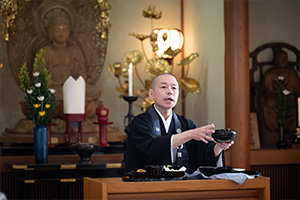
Soto Research Center Mr. Uno
Soto Sect, Mr. Uno:
The reason we train is to become a person who is said to be good, and also to be able to think that I was good today. For me, the person I admire most in the history of mankind is Buddha, and what he is saying, thinking, and doing is so wonderful that I want to be like him. That is why we train. It is to become a "bodhisattva" who puts others before ourselves, and to make the Buddha visible through our own actions. It is important to practice zazen, which is the form of Buddha's enlightenment, but it is also important to think about what kind of person a wonderful person is through daily actions such as eating and washing your face, and to continue doing that to improve yourself.
Before Dogen Zenji taught the importance of food to Japan, eating in training halls in Japan was a kind of an off-time activity. It was like finishing a meal and doing zazen or reading sutras. But is it really the form of Buddha? While thinking about the ingredients, how should eating be positioned in life? The basic idea of Zen and food is to make eating three times a day, and eating tens of thousands of times before dying, a time for training to become a wonderful person.
About "Gokan no ge"
It is a sutra that serves as a guide to "Zen and food," and the title "Gokan no ge" refers to the way to embrace food that serves as a guide to practice eating (Go: 5 items; Kan: to determine the reason of things; Ge: a short sutra).
First, to measure the degree of merit, to measure his coming. (Let's think about the preciousness of the life of the ingredients and the considerable time and effort they put into it.)
Second, to acknowledge the lack of virtue, and to serve him. (Let us reflect on whether we are trying to do the right thing that deserves this meal.)
Third, to prevent the heart, and to get away from the past, is to lead to greed. (Please refrain from wandering minds that lead to mistakes such as greed, deceit and foolishness.)
Fourth, to treat a good medicine, is to treat a deformed gyoko. (Let us accept it as a good medicine not to satisfy our desires but to keep our health.)
Fifth, for the sake of Jodo, we now receive this eating habit. (Let's eat this meal gratefully in the hope that we can achieve the ideals of Buddhism together.)
Manners
- Do not talk at all while eating. Take your time with your meal.
- Hold each serving plate in your hand. Do not take side dishes while eating.
- Focus on the food on that plate. While you are eating, you may think about the food you will eat next, but do not neglect the food you are eating. Taste the food on that plate carefully and move on to the next plate.
- Finally, wash the plate with the pickled food.
- Taste each ingredient carefully.
About the Japan International Cooperation Agency (JICA)
Ishihara:
Next, please give us an overview of the Japan International Cooperation Agency (JICA) and what it does.
Overview of JICA
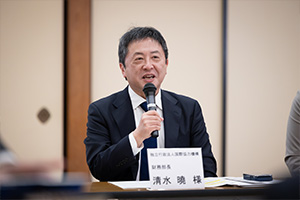
JICA, Mr. Shimizu
JICA, Mr. Shimizu:
Established in 2003 as an independent administrative agency, JICA is Japan's only organization that provides official development assistance. Its purpose is to promote the sound development of Japan and the international economy by contributing to the development, reconstruction, and economic stability of developing regions. JICA's main operations are loan aid (loans and investments to developing countries), grant aid, and technical cooperation. JICA also dispatches the Japan Overseas Cooperation Volunteers and the Japan Disaster Relief Team, which is dispatched by the Japanese government in the event of a large-scale natural disaster. JICA operates 96 offices overseas, but it also has 15 offices in Japan. Recently, JICA has been focusing on cooperation with people in regional areas of Japan.
I have just heard about the Soto Sect's approach to the SDGs. JICA has stated "human security" as the basic concept for its projects. The idea is that we should focus on each individual human being, protect people from widespread and serious threats to their survival, livelihood, and dignity, and guarantee the well-being of each individual person.
There are many people in the world who cannot enjoy a minimum standard of living due to conflict and poverty. International cooperation may have the image of providing assistance to a country (government), but we conduct our projects while considering how we can reach out to the people living in that country. The SDGs have a philosophy of "leaving no one behind," and "human security" is closely related to that philosophy, and the projects supported by JICA are closely related to all 17 goals of the SDGs.
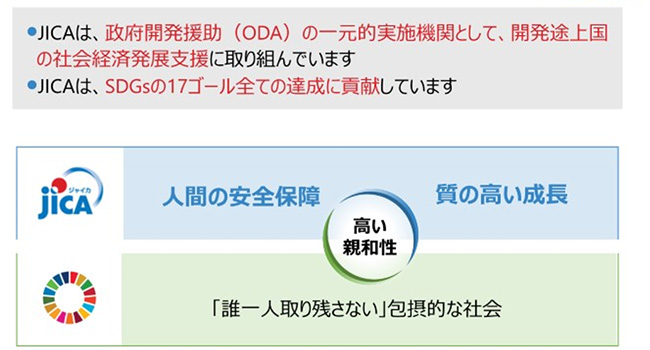
Food Security Initiatives
JICA, Mr. Shimizu:
I heard that food and cooking in the Soto Sect are a part of training and are very important. The food we received at the workshop was filled with everyone's heart, and I felt that no matter what kind of food it is, it is received with respect and prepared from the other person's point of view.
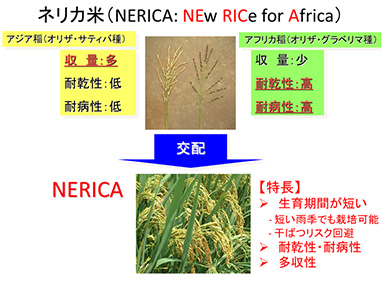
From the perspective of food, there are currently about 8 billion people in the world, and it is said that the number of hungry people in 2022 was 700 million, meaning that one out of every 11 people was suffering from hunger. Some estimate that the world's population will eventually reach 10 billion. If that happens, securing food for all of humanity will become an increasingly critical issue. In particular, cooperation with Africa, where rapid population growth is expected, will become extremely important.
JICA supports the development and dissemination of NERICA rice, a variety of rice that is suitable for the environment in Africa. NERICA is a hybrid of high-yielding Asian rice and African rice that is resistant to diseases and weeds. Between 2008 and 2018, JICA conducted dissemination activities in 23 countries, doubling production from 14 million tons to 28 million tons. JICA is currently working to disseminate NERICA in other African regions.
JICA is also taking a different approach in Southeast Asia and other regions where agricultural production is flourishing. In Vietnam, JICA worked with the Vietnamese government to establish standards for easy, safer, and more secure agricultural production, and is conducting dissemination activities. This is another initiative that will lead to the realization of the so-called SDGs, which will improve the livelihoods of smallholder farmers in rural areas and reduce disparities.
Ishihara:
JICA announced a new bond framework in April 2023, and issued JICA bonds as sustainability bonds and also issued Disaster Prevention/Reconstruction Bonds as thematic bonds*. Please tell us about the features and framework of JICA bonds, as well as the comprehensive initiatives for disaster prevention and reconstruction.
Thematic bonds are bonds that limit the use of funds to specific themes and regions under the bond framework of social bonds and sustainability bonds, with the aim of communicating JICA's priority initiatives externally and expanding partnerships. Thematic bonds are issued about once a year.
Features of JICA Bonds
JICA, Mr. Shimizu:
As I mentioned earlier, JICA's operations themselves are deeply related to the SDGs, but the funds raised through JICA bonds are used for JICA's loan aid and used as a source of funds for investment and financing projects for sustainable development in developing countries. Therefore, investing in JICA bonds will contribute to the SDGs.
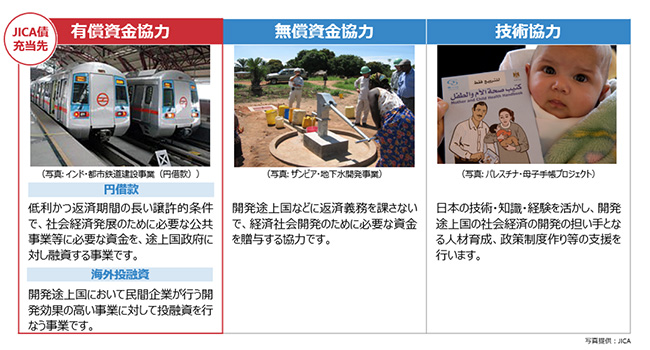
JICA issued Japan's first social bonds in 2016, at the dawn of the ESG bond market, and has since issued all bonds issued in Japan as social bonds. On the other hand, JICA's work includes many projects that simultaneously contribute to solving not only social issues but also environmental issues. To understand these unique characteristics of JICA's business, in April of this year we revamped our bond framework and newly issued "Sustainability Bonds."
Disaster Prevention and Reconstruction Assistance
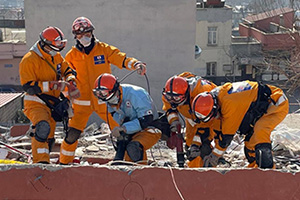
Disaster Relief Team conducts rescue operations
in disaster areas in Turkey
JICA, Mr. Shimizu:
Recent disasters in developing countries include the earthquake in Turkey and Syria and the massive floods in Pakistan. The earthquake in Turkey and Syria killed more than 54,000 people and injured more than 110,000 people. The floods in Pakistan caused enormous damage, affecting as many as 33 million people. In the aftermath of the earthquake in Turkey and Syria, the Japan Disaster Relief Team left Japan 12 hours after the disaster and conducted rescue operations. JICA has now begun providing assistance for the recovery and reconstruction of the affected areas. In the case of Pakistan, we provided tents and other emergency relief goods to those who lost their homes, and also supported the restoration of educational facilities that were damaged.
Currently, JICA has started providing assistance for the recovery and reconstruction of the affected areas. In the case of Pakistan, Japan provided emergency relief goods such as tents to those who lost their homes, as well as assistance for the restoration of damaged educational facilities.
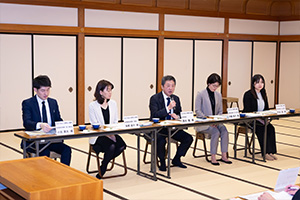
In addition to such assistance after a disaster occurs, it is also very important to provide support for bolstering disaster prevention in advance. In Japan, where natural disasters are frequent, disaster prevention know-how has been built up. At the same time, there is an urgent need to transfer such know-how to developing countries, and to develop disaster prevention infrastructure, which is not sufficiently developed in developing countries. In Vietnam, landslides are extremely frequent, and a project is being implemented to support the formulation of plans for the development of erosion control dams. In the future, Japan will also consider support for the construction of erosion control dams based on the plans formulated.
Similar efforts are being carried out in other countries. The Disaster Prevention and Reconstruction Bond, which was issued in September 2023, will be used as loan aid for the development of such disaster prevention infrastructure and reconstruction support after disasters.
Solving Social Issues through Investment in JICA Bonds
Ishihara:
I would like to ask you about the Soto Sect. Please discuss your philosophy on investing and the background behind your investment in JICA bonds.
The Soto Sect's Approach to Investment
Soto Sect, Mr. Yamauchi:
The Soto Sect manages funds for the purpose of preserving the assets of the religious corporation Soto Sect and contributing to the stability and development of our operations. The funds used for investment are made up of levies and charitable assets from temples across the country. Looking back, the majority of the funds are donations from Soto Sect Buddhist parishioners across the country.
Until recently, the idea of investing funds did not exist within the Soto Sect, and it was common to deposit money in time deposits. However, given the prolonged low interest rate environment, there was a growing need to manage funds through investment. In 2019, the Soto Sect established fund management rules for the first time and began to invest funds through time deposits with special agreements.
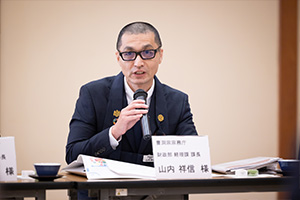
Soto Sect Office Mr. Yamauchi
Furthermore, in response to the recent rise in prices, in fiscal 2023, the Soto Sect established "bond purchase expenses" in the general account budget, aiming to preserve assets by building assets and securing financial resources from a medium- to long-term perspective. Until now, the Soto Sect has avoided investing, viewing it as dangerous, but as the idea of " from savings to investment" spreads throughout society, I feel that there is a growing understanding of investment not for speculative purposes but for the purpose of asset preservation with sufficient risk management.
In addition, completely separate from the idea of asset preservation, I would like to mention our efforts with respect to ESG investment to achieve the SDGs. The first time we invested in JICA was in fiscal 2021. At that time, there was no "bond purchase expenses, etc." so we set up a dedicated budget as "JICA Bond Purchase Expenses" and explained to the religious assembly representing the monks that investing in JICA would contribute to our slogan of "human rights, peace and environment" and have great significance as an effort to achieve the SDGs.
Reasons for Investing in JICA Bonds
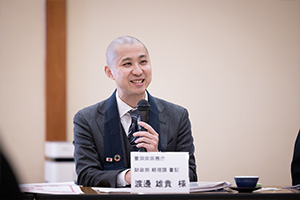
Soto Sect Office Mr. Watanabe
Soto Sect, Mr. Watanabe:
The direct impetus was that Sotoshu began to seriously address the SDGs. In November 2018, the 29th WFB World Buddhist Conference held in Japan and the Tokyo Declaration was adopted. The Buddhist community came together globally to support the realization of the SDGs, and in 2020, "Promotion of the SDGs" was included in the Soto Sect’s policy for missionary work. While exploring various initiatives, I learned that we could contribute to achieving the SDGs through ESG investment, and that JICA bonds existed.
The Soto Sect decided to invest in JICA bonds, among other ESG investments, for four reasons.
The first is JICA's financial soundness and safety as an issuer. As I mentioned earlier, most of the money entrusted to JICA came from donations, and because of our nature as a religious corporation, we wanted to avoid speculative investment targets. Therefore, the investment targets had to be very safe. In this regard, it goes without saying that JICA and the JICA bonds it issues have the highest level of security in Japan.
The second is the public nature of JICA's operations and the public benefits they deliver. As an inclusive corporation and a religious corporation, the keywords "public and public benefit" were extremely important as the first target of investment for the Soto Sect. In this regard, JICA, which provides ODA in a centralized manner, advances high-quality public projects such as low-interest, long-term yen loans that take into account the burden on developing countries, grant aid and technical assistance, and we judged it to be the most appropriate first investment for the Soto Sect.
The third reason is JICA’s importance to Japan's SDGs policy. The SDGs Action Plan, which is formulated every year by the SDGs Promotion Headquarters established in the Cabinet, sets out "eight priority issues (eight priority areas)" that Japan places particular priority on. JICA is involved in all eight areas and has a strong presence. The issuance of JICA bonds is also directly mentioned as a project (measure), and we recognize it as an important part of Japan's SDGs measures.
Fourth, as a member of the global Buddhist community, many of JICA's projects involve infrastructure development and technical assistance in developing countries, and a high proportion of the projects are in Asia. Many of JICA's projects include Buddhist countries. We would like to be of assistance to these Buddhist countries.
Because JICA implements projects at a very high level, I feel that even the Soto Sect, which had little connection with investment until now, has been able to explain the projects to all involved parties with a sense of confidence, and gain their understanding with respect to our investment.
Ishihara:
This year's themes are food, disaster prevention and reconstruction, and peace. In fiscal 2022, JICA issued Peace Building Bonds as thematic bonds. Please tell us about JICA's efforts to build peace.
Issuance of Peace Building Bonds and Efforts for Peacebuilding
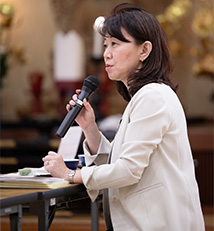
JICA, Ms. Takahashi
JICA, Ms. Takahashi:
The background of issuing the Peace Building Bonds was that we wanted to convey JICA's support approach and ideas for peacebuilding, which JICA has been working on for many years, at the time of the crisis in Ukraine. We also wanted people to know the reality that conflicts are occurring not only in Ukraine but also in various parts of the world, so that we could work together on peacebuilding.
As of 2020, there were 56 armed conflicts around the world. The number of refugees and displaced persons exceeded 100 million. In developing countries, many conflicts are caused by poverty and inequality. Reducing these triggers will in turn reduce the risk of conflict. Therefore, JICA's support for the development of social infrastructure, such as roads, power plants, and water and sewage systems, as well as support for strengthening education, health systems and rural development, is also part of conflict prevention from the perspective of correcting disparities.
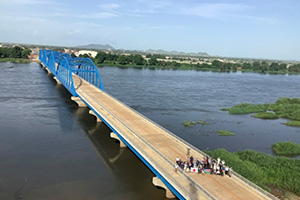
Freedom Bridge completed in South Sudan
In addition, the development of social infrastructure I just mentioned is important in the reconstruction phase. In South Sudan, Africa, where civil war had been ongoing for a long time and peace has finally been achieved in recent years, JICA provided grant aid to support the construction of a bridge to improve logistics and transportation.
In fact, this project had been interrupted many times due to the civil war and the COVID-19 pandemic, but it was finally completed in May 2023 and opened as the Freedom Bridge, a symbol of peace. At the opening ceremony, the current president and vice president, who had been at odds during the civil war, stood side by side with JICA President Tanaka and shook hands with each other with a smile. JICA staff, who had been involved in supporting this country for a long time, were moved by the event that symbolized peace.
In Iraq, where the war ended in 2003, infrastructure has been destroyed by repeated conflicts since the Iran-Iraq War, resulting in shortages of electricity and water, along with insufficient development of irrigation for food production. To address these issues, Japan provides loans to support the development and renovation of power plants, water supply facilities, and irrigation equipment, as well as the development and rehabilitation of farmland. The Peace Building Bond issued in FY2022 is being used for aspects of these efforts.
Conflict prevention and reconstruction require steady efforts. In Ukraine, we are currently providing technical assistance and grant aid for emergency reconstruction, and one of these is landmine clearance. In addition to providing the necessary equipment, training is conducted in cooperation with the Cambodian demining organization, which Japan has supported in this field for many years, in order to transfer technology to the people who actually use it.
Ishihara:
I understand that the Soto Sect sympathizes with the Peace Building Bond. Please tell us about your thoughts on this.
Contributing to Peace through Investment in Peace Building Bonds
Soto Sect, Mr. Watanabe:
The Soto Sect works under the slogan of "Human Rights, Peace, and the Environment," and we share JICA's philosophy of issuing peace building bonds. Even at this very moment, conflicts of all sizes are breaking out all over the world, and precious lives are being lost. Being in Japan, one of the most peaceful countries in the world, and an island nation surrounded by the sea, even when I see news like this, I feel like it's someone else's business, and it's difficult to take it personally.
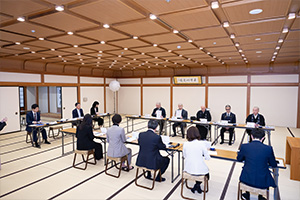
Investing in "Peace Building Bonds" issued by JICA can be an opportunity to take such events as your own and tackle them. By investing (or trying to invest) your own money, regardless of the amount of money invested, such as in corporate bonds like ours, or bonds for individuals, you can gain insight into the field by examining how the targets of investments are spending the money.
I myself would not have studied ESG investment or JICA's business in earnest if it had not been for the opportunity to engage in SDGs as a member of the Soto Sect. Through JICA's seminars and reporting, I have learned a great deal about what is happening in the world and what is preventing us from solving issues. I am very grateful for that.
With the war in Ukraine, civil wars in Syria and Ethiopia, conflicts in Afghanistan, and recently the conflict between Hamas and Israel, the world is far from peaceful. As Mr. Kondo and Mr. Abe mentioned earlier, our mission as monks is to stand by those who are suffering or grieving and find joy in living with each other. However, in conflict areas and post-conflict reconstruction, there is little that amateurs like us can actually do when we go to the actual places, and in fact the situation might actually worsen if we go there. Under such circumstances, we hope that JICA can take even a small step toward resolving the situation.
Ishihara:
Please tell us about the impact of JICA bonds.
Impact of JICA Bonds
JICA, Ms. Takahashi:
In terms of impacts, just to name a few, JICA has provided assistance through loan aid to developing countries to provide:
- Safe drinking water to 72.84 million people
- Electricity to 20.77 million people
- Road maintenance covering over 23,000 kilometers, and passenger rail service to 1.71 billion people a year.
Pre-evaluations are conducted before each project is implemented, and after each project is completed, third-party evaluations are conducted.
These evaluations and the impact of projects implemented thus far are periodically published in the Impact Report, which is posted on our website. We intend to make public each thematic bond as needed.
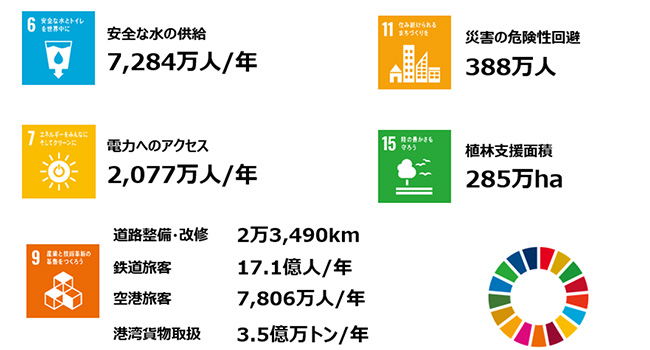
In closing
Ishihara:
The share of ESG bonds among total bonds issued is on the rise. As the market itself is expanding, securities companies want to continue their role of connecting issuers and investors and aim to further expand their efforts to achieve the SDGs. Lastly, could you tell us about your thoughts on this meeting?
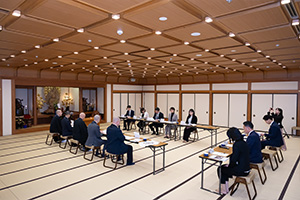
JICA, Ms. Takahashi:
Through this conversation, I reaffirmed that the Soto Sect and JICA share similar philosophies. For example, when it comes to meals, you mentioned that each JICA staff member carefully considers what kind of people are involved in the process leading up to the meal, and I felt that this is in line with the fact that each JICA staff member earnestly considers how to deliver the impact of the project to the people of the host country, and is in line with how each JICA staff member approaches his or her work.

Soto Sect, Mr. Yamauchi:
Prior to this conversation, I did not know much about JICA, so I researched JICA on the Internet. In doing so, I felt that JICA's efforts were linked to what Buddha and Dogen Zenji said in Buddhism. For example, in the Kannon-kyo Sutra, Kannon sometimes takes the form of a merchant and sometimes a king to save the world. I felt that this is similar to JICA's efforts of working with people in local communities. I would like to promote activities for the betterment of the world, though in different forms, while working with JICA, both as the Soto Sect and as a monk.
Soto Sect, Mr. Uno:
We must always be aware that our funds come from donations. There are many Soto Sect monks who want to give some kind of aid to the war in Ukraine, but we have to think about whether the donations will satisfy the hearts of those who donated the money if the funds are used for weapons. If we want to give some kind of aid but don't know how to do it, we feel that we can do what we need to do through JICA. I feel that we can become bodhisattvas through JICA. I don't know if other religious groups buy JICA bonds, but "bodhisattva practice" is the same in Mahayana Buddhism. I hope that the Buddhist community can connect with JICA. Also, in the context of "leaving no one behind," I think there are many people who want to take some type of action. If you don't know what to do, I want many people to know that by working with a professional, you can expand your impact.
